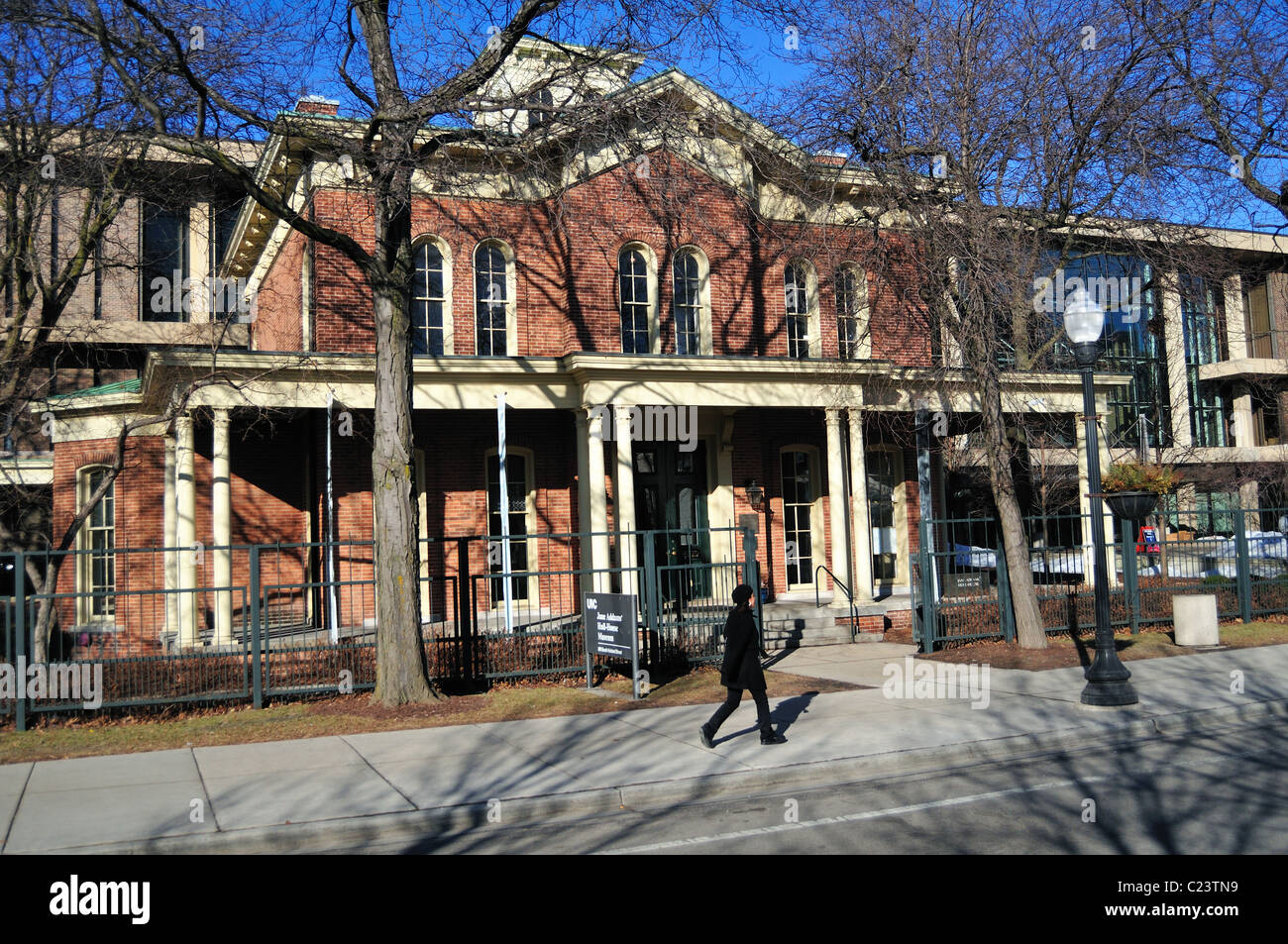Table Of Content

The complex expanded to include thirteen buildings and supported clubs and activities such as a Labor Museum, the Jane Club for single working women, meeting places for trade union groups, and a wide array of cultural events. A historic picture, "Meet the Hull House Kids," was taken on a summer day in 1924 by Wallace K. Kirkland Sr., Hull House Director. The twenty Hull House Kids were erroneously described as young boys, of Irish ancestry, posing in the Dante School yard on Forquer Street (now Arthington Street).
Explore Other Articles
Hull-House is now stewarded by the University of Illinois at Chicago as the Jane Addams Hull-House Museum, and in 1963 the original dining hall was relocated next to the original Hull Home mansion on the UIC campus. (The other 11 buildings were, unfortunately, demolished.) A 1967 restoration also removed a third-floor addition that Addams had added. The museum aims to preserve Addams’ legacy, as well as the physical environment that fostered it. Having quickly found that the needs of the neighborhood could not be met unless city and state laws were reformed, Addams challenged both boss rule in the immigrant neighborhood of Hull-House and indifference to the needs of the poor in the state legislature.
Women at The Hague: The International Congress of Women and Its Results

Among the facilities at Hull House were a day nursery, a gymnasium, a community kitchen, and a boarding club for working girls. Hull House offered college-level courses in various subjects, furnished training in art, music, and crafts such as bookbinding, and sponsored one of the earliest little-theatre groups, the Hull House Players. In addition to making available services and cultural opportunities for the largely immigrant population of the neighbourhood, Hull House afforded an opportunity for young social workers to acquire training.
Hall of Fame moves enshrinement dates to Oct. 12-13
Hull House, established in Chicago, Illinois in 1889, was one of the first settlement houses in the United States. Co-founded by volunteers Jane Addams and Ellen Gates Starr, Hull House eventually became one of America’s largest settlement houses with thirteen buildings to house facilities. Addams and other Hull-House residents sponsored legislation to abolish child labor, establish juvenile courts, limit the hours of working women, recognize labor unions, make school attendance compulsory and ensure safe working conditions in factories. The Progressive party adopted many of these reforms as part of its platform in 1912. At the party’s national convention, Addams seconded the nomination of Theodore Roosevelt for president and campaigned actively on his behalf. She advocated for women’s suffrage because she believed that women’s votes would provide the margin necessary to pass social legislation she favored.
Addams believed that the remedy for sprawling cities and dehumanizing factories was cooperation among classes and ethnic groups. To achieve this “socialized democracy,” she believed America required an active, benevolent government and wise regulation. Conservatives (then as now) believed that entrepreneurs and capitalism produce abundance, that competition motivates workers, that social classes were inevitable, and that trade unions and government interfered with freedom.
Online library collection celebrates Hull-House on anniversary of founder's death UIC today - UIC Today
Online library collection celebrates Hull-House on anniversary of founder's death UIC today.
Posted: Mon, 16 May 2022 07:00:00 GMT [source]
Her account was personal, modest, and candid, blending her accomplishments and progressive philosophy with poignant portraits of immigrants in the Nineteenth Ward. It quickly went through six printings and was translated in German, French, and Japanese. An optimistic book, it is regularly excerpted in contemporary books for young adults and children as well as in literature anthologies and history texts. By 1910, Jane Addams had become a household name, a beloved national figure, the recipient of honorary degrees.
Addams and Starr decided to start a kindergarten and provide a room where the mothers could sit and talk. Within three weeks the kindergarten had enrolled twenty-four children with 70 more on the waiting list. As an organization, Hull House provided kindergarten and daycare facilities for working mothers, citizenship classes for recent immigrants, and served as a meeting house for local trade union groups. Hull House also housed an art gallery, extensive library and small performance theater.
The house is built on a flat concrete slab, which is both the foundation and the final floor. The walls are concrete tilt up slabs, poured into forms on top of the foundation. Anthony Edwards continues to be a handful for the Suns, who now sit on the edge of a devastating playoff exit. Sociologist Christopher Lasch pushed back against Davis, calling Addams “a thinker of originality and daring.” Lasch is joined by other scholars, such as Louise K. Knight, who praises Addams’s synthesizing, strong, logical mind. Other critics claim Addams was overly optimistic, lacking a “tragic view” of life.
She supported trade unions and strikes but rejected anarchists and the militant Industrial Workers of the World. Skeptical of socialism, she repeatedly criticized the excesses of capitalism. Always, Jane Addams was an unwavering suffragist, connecting the vote to improving the lives of the families in the Nineteenth Ward.
Hull-House became a symbol of progressivism, the reform movement that flourished between 1890 and 1920 as it tried to better a country battered by industrialization, the explosive growth of cities, and the sudden arrival of millions of immigrants, mostly poor. Addams remained head resident of Hull House until her death in 1935. Hull House continued to be active on Halsted Street until the 1960s, when it was displaced by the University of Illinois' new urban campus.
Hull House also set out to ameliorate various effects of poverty throughout Chicago, establishing a public dispensary to provide nutritious food for the sick, a child daycare center, and public baths for Chicago’s underprivileged population. Addams went from the revered creator of Hull-House, an esteemed public intellectual, to the naïve pacifist and traitor to her country. In her last years, she became the respected humanitarian who foresaw the folly of World War I and was awarded the Nobel Peace Prize in 1931. Sick for much of the war, isolated and shunned, Addams escaped self-pity by joining with Herbert Hoover in the humanitarian issue of food, urging Americans to conserve food and to send the surplus to starving Europeans.
During that era, a familiar dichotomy emerged, resonating with contemporary readers. Male members of the University of Chicago Sociology Department tended to maintain a distance from their subjects. They operated from their offices within the university, using coordination for their studies. Women sociologists were often viewed by their male counterparts as mere data collectors. While men regarded the data they gathered and the insights they derived as the ultimate goal, women viewed them as indicators of issues needing resolution. Florence Kelley and several other women based at Hull-House carried out research into the sweating trade in Chicago and this led to the passing of the pioneering Illinois Factory Act (1893).

No comments:
Post a Comment